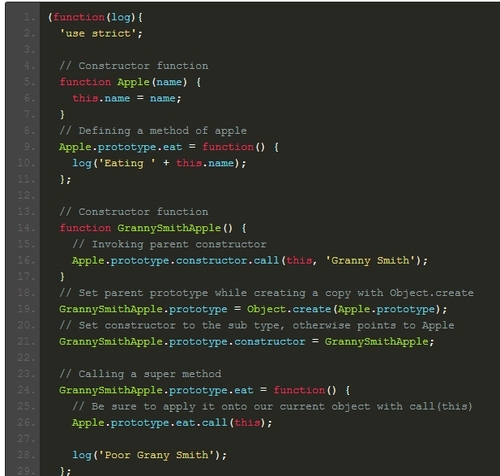这篇文章将为大家详细讲解有关如何在前端编码时实现人肉双向编译,文章内容质量较高,因此小编分享给大家做个参考,希望大家阅读完这篇文章后对相关知识有一定的了解。
如何在前端编码时实现人肉双向编译
React+flux是目前最火的前端解决方案之一,但flux槽点颇多,例如store比较混乱,使用比较繁琐等,于是出现了很多第三方的基于flux优化的架构。

有人统计了目前主流的flux实现方案,感兴趣的可以看这里:Which Flux implementation should I use?
其中redux是目前github上star最多的一个方案,该方案完全独立于react,意味着这套理念可以作为架构层应用于其他的组件化方案。同时官方也提供了react-redux库,帮助开发者直接使用react+redux快速开发。
个人理解它的主要特性体现在以下几点:
强制使用一个全局的store,store只提供了几个简单的api(实际上应该是4个),如subscribe/dispatch(订阅、发布),getState,replaceReducer。
store负责维护一个唯一的叫做state树的对象,其中state存储了应用需要用到的所有数据。
store和顶层组件使用connect方法绑定,并赋给props一个dispatch方法,可以直接在组件内部this.props.dispatch(action)。 简单一点说,就是去掉了flux中组件和store的unbind/bind环节。当state变化时,自动更新components,不需要手动操作。
提供了applyMiddleware方法用于异步的action,并且提供了加入中间件的能力,例如打印日志追踪应用的所有状态变化。
对全局的数据state的操作,由多个reducer完成。每个reducer都是一个纯函数,接收两个参数state和action,返回处理后的state。这点类似管道的操作。
接下来我们可以回答标题的问题了,即:如何在前端编码时实现人肉双向编(zi)译(can)。
其实就是使用coffee来编写react+redux应用。
我们来写个简单的hello world玩玩。
view部分
这部分和redux/flux无关,纯粹react的实现,使用jsx的话,render部分的代码大概长这样:
render:function(){ return ( <div> <div class="timer">定时器:{interval}</div> <div>{title}</div> <input ref="input"><button>click it.</button> </div> ) }那如何使用coffee写这段代码呢? 我们需要先将jsx编译这类似这样的js代码,请注意是用大脑编译:
render:function(){ return React.createElement('div',null, React.createElement('div',{className:'timer'},'定时器'+this.props.interval), React.createElement('div',null,this.props.title), React.createElement('input',{ref:'input'}), React.createElement('button',null,'click it.') ); }然后将js代码逆向编译为coffee。
这里我们可以用$代替React.createElement简化代码(终于可以用jQuery的坑位了),得益于coffee的语法,借助React.DOM可以用一种更简单的方式实现:
{div,input,button,span,h2,h3,h4} = React.DOM
这里就不单独放render部分,直接看完整代码:
{Component,PropTypes} = React = require 'react' $ = React.createElement {div,input,button} = React.DOM class App extends Component clickHandle:-> dom = this.refs.input.getDOMNode() this.props.actions.change(dom.value) dom.value = '' render:-> {title,interval} = this.props div className:'timer', div null,'定时器:' + interval div null,title input ref:'input' button onClick:@clickHandle.bind(this),'click it.' App.propTypes = title: PropTypes.string actions: PropTypes.object interval: PropTypes.number module.exports = App如果你能看到并看懂这段coffee,并在大脑里自动编译成js代码再到jsx代码,恭喜你。
连接store
这个环节的作用,主要是实现view层和store层的绑定,当store数据变化时,可自动更新view。
这里需要使用redux提供的createStore方法创建一个store,该方法接受2个参数,reducer和初始的state(应用初始数据)。
store.coffee的代码如下:
{createStore} = require 'redux' reducers = require './reducers' # reducer state = require './state' # 应用初始数据 module.exports = createStore reducers,state然后我们在应用的入口将store和App绑定,这里使用了redux官方提供的react-redux库。
{Provider,connect} = require 'react-redux' store = require './store' $ = React.createElement mapState = (state)-> state rootComponent = $ Provider,store:store,-> $ connect(mapState)(App) React.render rootComponent,document.body可能有人会问,mapState和Provider是什么鬼?
mapState提供了一个类似选择器的效果,当一个应用很庞大时,可以选择将state的某一部分数据连接到该组件。我们这里用不着,直接返回state自身。
Provider是一个特殊处理过的react component,官方文档是这样描述的:
This makes our store instance available to the components below. (Internally, this is done via React undocumented “context” feature, but it’s not exposed directly in the API so don’t worry about it.)
所以,放心的用就好了。
connect方法用于连接state和App,之后即可在App组件内部使用this.props.dispatch()方法了。
添加action和reducer
***我们添加一个按钮点击的事件和定时器,用于触发action,并编写对应的reducer处理数据。
在前面的App内部已经添加了this.props.actions.change(dom.value),这里看下action.coffee的代码:
module.exports = change:(title)-> type:'change' title: title timer:(interval)-> type:'timer' interval:interval
再看reducer.coffee
module.exports = (state,action)-> switch action.type when 'change' Object.assign {},state,title:'hello ' + action.title when 'timer' Object.assign {},state,interval:action.interval else state至此,代码写完了。
一些其他的东西
这里只介绍一个中间件的思想,其他的特性例如异步action,或者dispatch一个promise等原理基本类似:
dispatch = store.dispatch store.dispatch = (action)-> console.log action # 打印每一次action dispatch.apply store,arguments
由于时间关系,redux的一些特性和设计原理没有展现出来,以后有时间再单独讲,完整的项目代码,感兴趣的同学可以看这里:请点我,或者直接找我聊。
项目用到了fis3作为构建工具,使用fis3 release即可在本地查看效果。
关于如何在前端编码时实现人肉双向编译就分享到这里了,希望以上内容可以对大家有一定的帮助,可以学到更多知识。如果觉得文章不错,可以把它分享出去让更多的人看到。
免责声明:本站发布的内容(图片、视频和文字)以原创、转载和分享为主,文章观点不代表本网站立场,如果涉及侵权请联系站长邮箱:is@yisu.com进行举报,并提供相关证据,一经查实,将立刻删除涉嫌侵权内容。